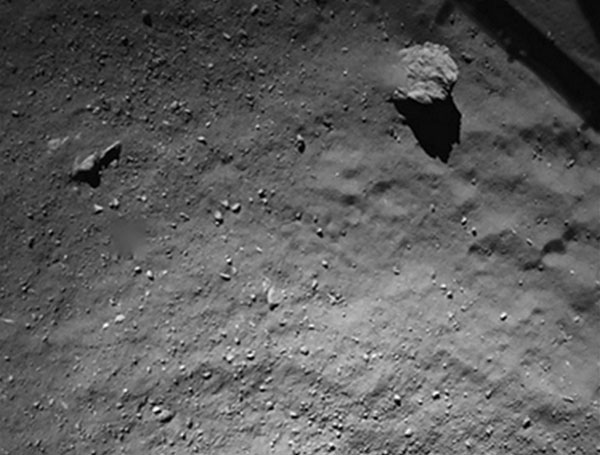Within the Observatory, roughly thirty scientists, engineers, technicians and administrators have been working on the Rosetta mission. On the 12th of November, the tension mounted as they watched in real time Philae’s landing on the comet.
A certain number of them were invited to follow this event from ESOC, in Darmstadt, ESA’s operations control centre.

Others watched the release sequence from Paris, at the Cité des sciences et de l’industrie, where the event was screened in partnership with, among others, the ESA, the CNES, the CNRS, and the Paris Observatory. François Hollande, President of the Republic was there, as well as many other personalities, including Claude Catala, president of the Paris Observatory.

For everyone
Philae’s descent constituted an unforgettable high point in their career.
On the 13th of November 2014, the breathtaking surface detail imaged by Philae’s CIVA camera, much of which is still poorly understood, was made public…

Scientists hope to better understand the composition of comets, which were made from the same material as the planets of the solar system when they were formed 4,5 billion years ago.
A flood of results is now expected to follow this landing. However, as of today (November 14th), it would be premature to interpret Philae’s data, which must first be analyzed ; moreover, not all the instruments have as yet been activated. As for what will happen in the short and the long term to the robot, which after bouncing a couple of times settled down far from its planned destination, we will have to bide our time : we should know more in a few days…
